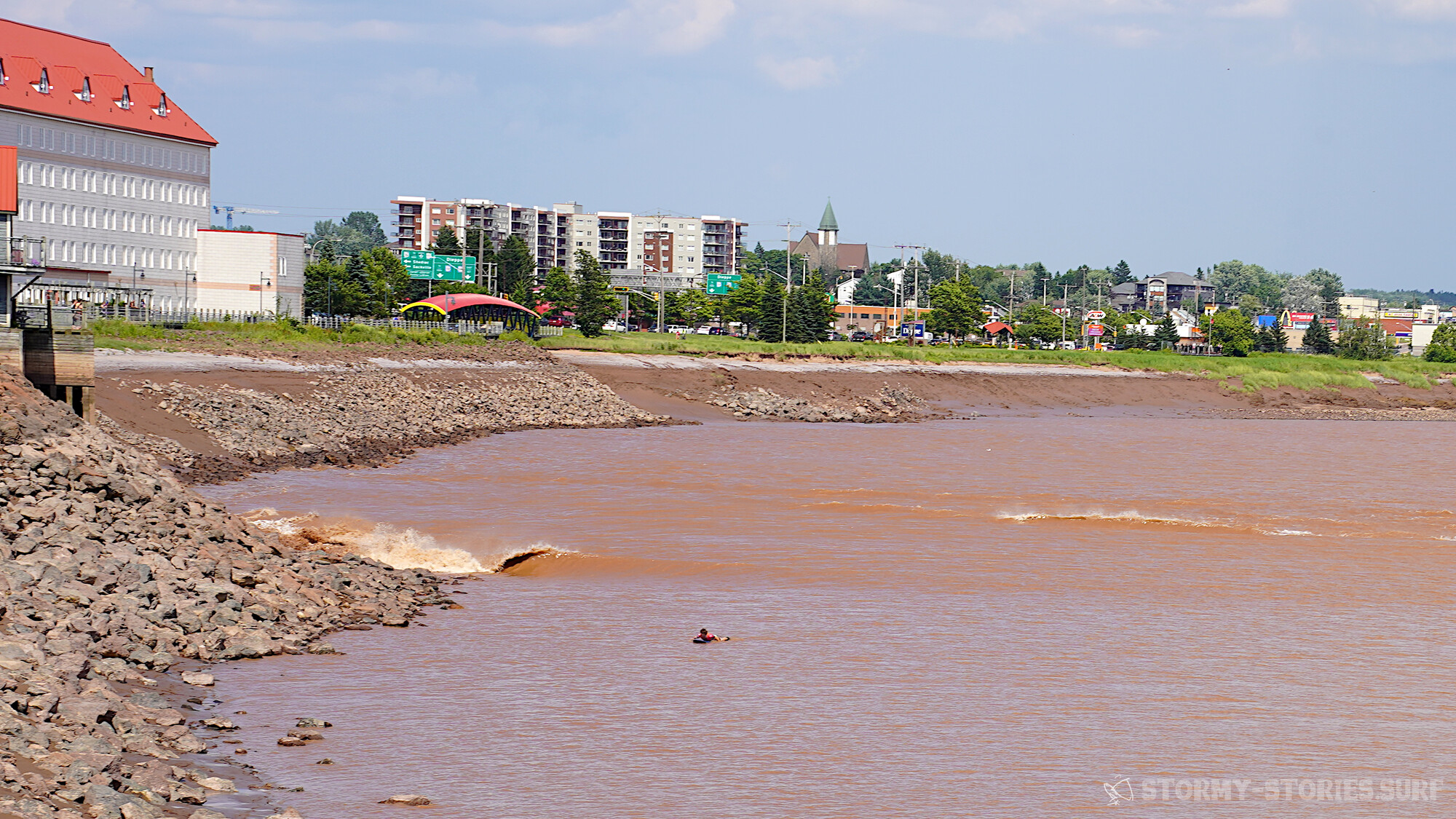For potential surfers, it should be mentioned at this point that surfing in Moncton is not officially legal, but seems to be tolerated in most cases.
Information on wave height and run-in time can be found at the tourist information office in Moncton or at
https://tides.gc.ca/en/stations/00175 .
It is always important to be ready at least 20 minutes before the predicted time to not to miss any potentially too early waves. The best view of the spectacle can be found in the so-called “Parc du mascaret” / “Bore Parc” in GPS :
46.0895145, -64.7709387

So great to hear from you. You guys are having an amazing adventure. Love reading the stories. ❤️Nova Scotia. Blair and Diane
Hi Diane, Hi Blair, so great to hear from you and nice to hear that you enjoy following our adventure! I hope you have a great time in Nova Scotia and that you are already looking forward to your amazing south-africa trip?
We are currently in Stevenson at the Columbia River Gorge and I enjoy sailing everyday the super strong east winds here (my small wave board and my 3.7 sail are sometimes even to big :D) So, anyway thanks again also for the great recommendation to make a stop at the Gorge!
Best wishes, Tanja & Andre
Hi Andre und Tanja,
wir haben euch in Yachats auf de Parkplatz getroffen, remember die 2 „alten Frankfurter“ mit ihrem kleinen Van. wir sind nach unserer Tour durch Kalifornien, Texas und Louisiana nun wieder im Norden (aktuell Toronto) unterwegs. Im Mai geht es von New York aus zurück nach Germany. Wir würden uns freuen von euch zu hören und wir sind ganz gespannt zu erfahren, wo ihr euch aktuell rumtreibt.
Safe travels allüberall und liebe Grüße aus Toronto
Edith und Kim
Hallo ihr beiden, schön von euch zu hören. Sehr schön und spannend, dass es euch dann wieder zurück in den Norden verschlagen hat. Von da aus zurück zu verschiffen ist mit Sicherheit ein bisschen einfach als von Zentral oder Südamerika. Wir sind jetzt mittlerweile in Guatemala angekommen. Wir haben es damals definitiv nicht bereut weiter zu fahren. Wir haben uns so sehr in Mexico verliebt, dass wir dort 8-9 Monate verbracht haben. Es war wirklich schön und auch entgegen der Angstmache all der Amerikaner wirklich sicher und einfach zu bereisen. Jetzt aktuell erkunden wir die unfassbare Natur Zentral-Amerikas und fühlen uns auch hier sehr wohl. Viele Grüße – und wer weiß vielleicht sieht man sich ja mal wieder 🙂